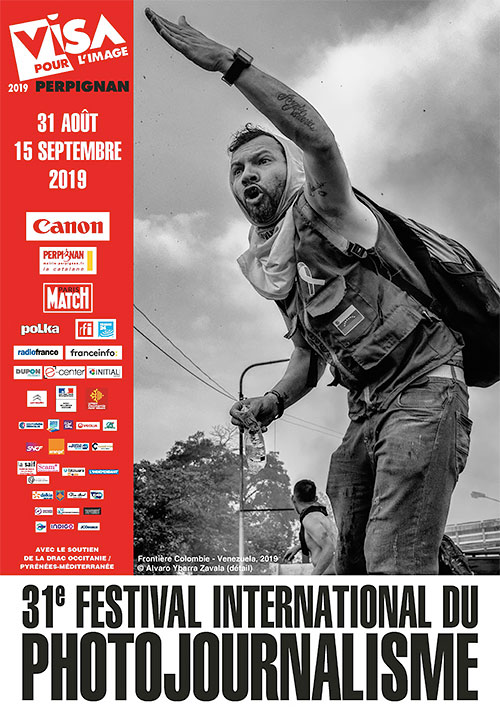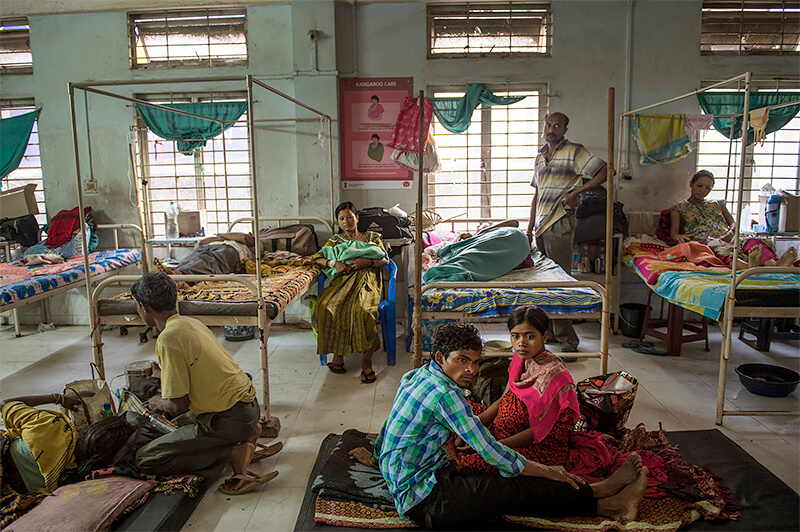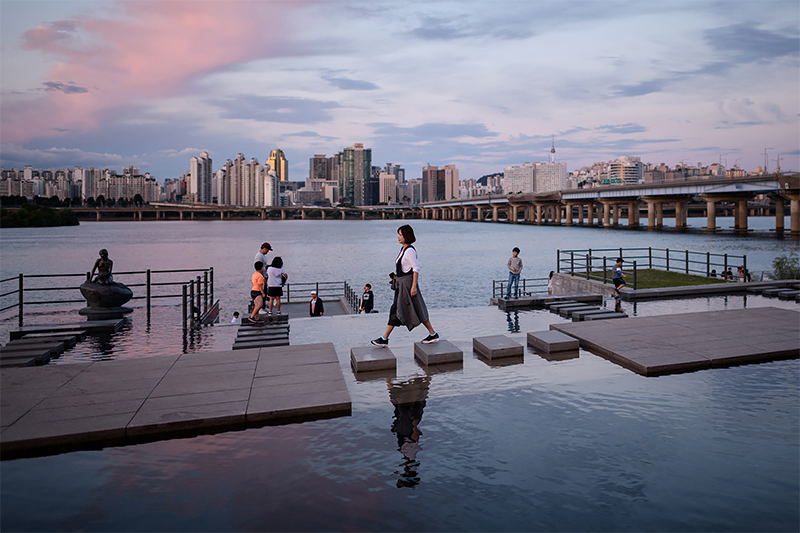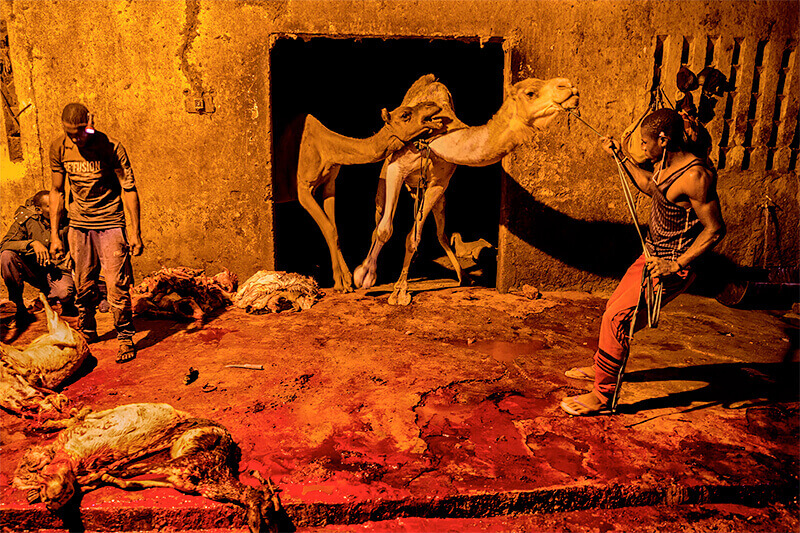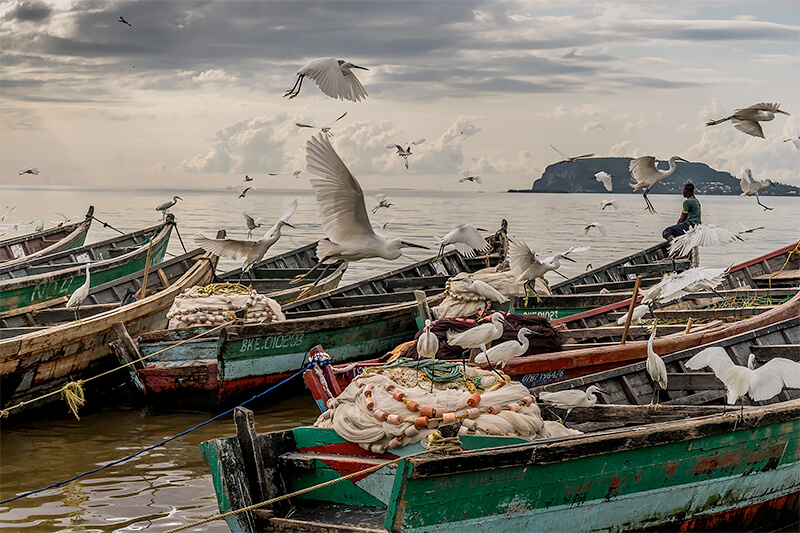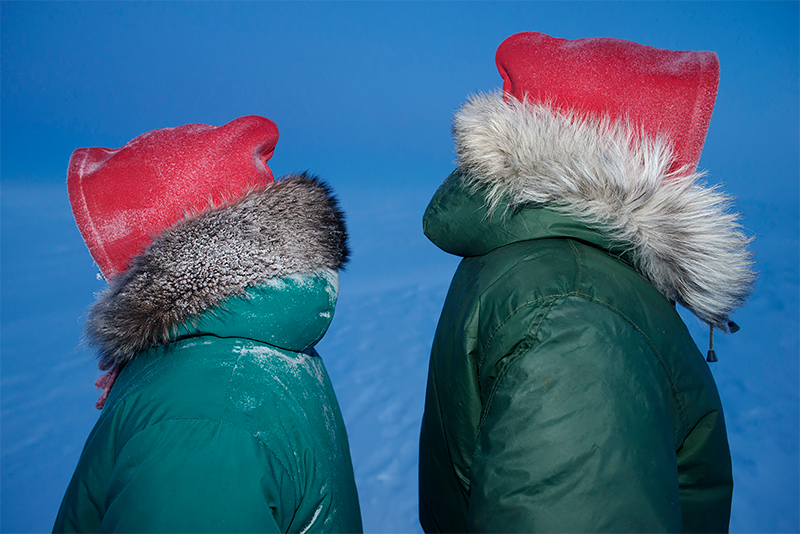Mexico, Venezuela, Egypt, Libya, Algeria, North Korea, China, Russia, Syria, Bangladesh and Hungary are countries with a sad reputation for violations of freedom of the press, and unfortunately the list does not stop there. We could add Malta, and even Northern Ireland after the recent murder of Lyra McKee for which the New Irish Republican Army admitted responsibility. And there's the case of Myanmar where the former symbol of resistance to the military junta and Nobel Peace Prize laureate (an award, with hindsight, now regretted) Aung San Suu Kyi failed to support the two Reuters journalists whose seven year sentence was upheld on appeal despite evidence that the arrest of Wa Lone and Kyaw Soe Oo, who were investigating a massacre of Rohingya civilians, was set up by the police.* Any number of other examples can be found of journalists killed, injured or imprisoned, and every year the figures are shocking. All their names deserve to be cited.In France too we can see reporters targeted, attacked by demonstrators and police without any major public outcry. Causes and professional ethics must be defended; journalists' sources must be protected. One day the European Union, or even the United Nations will have to reach agreement on the definition of a journalist. Conditions for issuing press cards change from country to country, and there should be a standardized approach so that all journalists have the same rights, which means, of course, that they have the same duties. But this is not the way things are going at the moment. Certain politicians, even in leading democracies, will readily criticize journalists for doing their job, particularly when reports might leave them in an awkward situation. The general public is increasingly skeptical and wary of the media. Everything needs to be reviewed; questions need to be asked for trust to be restored. The right to report on news stories and conduct investigations freely is a basic pillar of democracy. That should go without saying, yet it needs to be stated loud and clear, again and again.In Perpignan, we shall continue to present stories from around the world. We believe in journalism, and our commitment is greater than ever.
PROGRAM:
Cyril Abad / Hans Lucas
IN GOD WE TRUSTFAITH AND ECCENTRICITY IN THE UNITED STATES
Here are religious practices with a difference in the United States. American society was divided over the election of Donald Trump, yet 80% of white evangelicals voted for him - an interesting social phenomenon. For this report Cyril Abad focused on a number of these evangelical congregations and their original approaches to religious worship.
Lynsey Addario / National Geographic / Getty Images
MATERNAL MORTALITY
Every day more than 800 women around the world die from complications related to pregnancy and childbirth, without access to quality medical facilities and healthcare professionals. Between 60 and 70% of these deaths are preventable, and while most are in the developing world, the United States has one of the worst maternal mortality rates of developed nations, second only to Serbia. The report over ten years covers the situation in a number of countries: Afghanistan, Sierra Leone, India, the Philippines, Somaliland, and the United States.
© Lynsey Addario/National Geographic/Getty Images
Guillermo Arias / AFP
THE CARAVAN
The project documents the journey of thousands of Central American migrants traveling in large groups to the United States in the hope of a better life, recording the challenges on their journey through Mexico, the difficulties faced once they reach the US-Mexico border, then the desperate struggle to cross the physical barriers on the border, and pursue their American dream.
Valerio Bispuri
PRISONERS
The project recounts the daily life of prisoners in detention centers and maximum security prisons in Italy, a country with 190 penitentiaries, including 57 for women. Valerio Bispuri covered ten prisons over a period of four years, traveling from north to south. A prison holds a mirror up to society, reflecting the full range of behavior patterns, from small dramas to major economic and social crises. Here, in these non-places are people deprived of freedom attempting to develop their own routines, to express affection, and find an alternative for the future.
Patrick CHAUVEL
50 YEARS ON THE FRONT LINE
Patrick Chauvel had only just turned 20 when he set off to do his first report. He admits that he knew nothing and that the pictures he took were not very good, but he was not to be discouraged, so off he went again, and since then he has learned a great deal. He has covered almost every conflict the world has seen in the past 50 years, and some of his pictures are now icons. The man is courageous, and he is a loyal traveling companion. Perpignan is both pleased and proud to be showing the career of one of the most gifted photographers of his generation.
Olivier Coret / Divergence for Le Figaro Magazine
FRANCE'S YELLOW VESTS LES GILETS JAUNES
It started in late 2018 with a message via the Internet calling for people to march on Saturday, November 17 to protest against the new tax on fuel. Large numbers of French citizens rallied to the cause in what was then named Act 1. Demands were made on political issues, taxation and social concerns. So now, every Saturday, there are protests across France, with varying degrees of participation, and sometimes with outbursts of violence rarely seen in an affluent and democratic country. In rural areas they gather at traffic roundabouts, while in Paris they focus on the Champs-Élysées. Olivier Coret has covered the movement that is both atypical and unpredictable. Six months on, no one seems to know how it can end.
Éric Hadj for Paris Match
MONDAY, TUESDAY, WEDNESDAY, THURSDAY, FRIDAY, YELLOW VESTS, SUNDAY
We're sick of working for nothing! So, on Saturday, November 17, 2018, they took to the streets. The Yellow Vests seen here in Paris, Bourges and Senlis have learned the art of protesting, some with goggles and helmets, steering clear of tear gas from riot police and cobblestones hurled by violent elements that move into the march. They are speaking out and speaking up on issues such as fuel prices, wages, taxation and even the Global Compact for Migration. Éric Hadj has been reporting on the movement from the outset, covering a wide range of players: demonstrators, police, politicians, and right up to the Minister of the Interior.
Ed Jones / AFP
THE KOREAS - ACROSS THE PENINSULA
North and South Korea are but one step apart, yet for a journalist traveling between the two it is a journey of some 2000 kilometers, a distance symbolizing their divergent paths. The Korean peninsula is a paradox, a 71-year stand-off between two diametrically opposed systems unable to ignore or accept the other. Starting in 2012, Ed Jones gradually gained access to North Korea, witnessing large-scale, staged events. Now based in Seoul in South Korea, he has been making regular visits to Pyongyang since 2016 when AFP opened an office there.
On the final day of the annual “Chuseok” Thanksgiving celebration, a woman is seen against the city skyline, walking over stepping-stones by the Han River. Yeouido Park, Seoul, September 26, 2018.
© Ed Jones/AFP
Alain Keler / MYOP
DIARY OF A PHOTOGRAPHER
Almost every day since 2011 Alain Keler has been publishing a photo and text on his blog which now stands as a diary of his black and white photography from 1968 to 1989. The exhibition is built around three parts of his career: the early days as a self-taught photographer, traveling the world and spending years in New York, next Latin America and his work for wire agencies, in particular Sygma, and then his personal work. Here is a journey through photography that can also be seen as a quest for identity, plus the completion of the journey back to the roots.
Kirsten Luce / National Geographic
THE DARK SIDE OF WILDLIFE TOURISM
Wildlife tourism has changed dramatically in the age of modern technology and telecommunications, with everyone wanting a digital souvenir to share in real time via social media. But behind the scenes is the suffering hidden from the eyes of the average traveler. The images of animals exploited for the entertainment of tourists are from different areas in the Amazon, Thailand and Russia. The report is designed to raise awareness so that people stop and think before supporting such operations and before posting images likely to encourage abusive interactions with wildlife.
Pascal Maître
THE SAHEL IN DANGER - A TIME BOMB
Here, in one of the poorest parts of the world, a region under threat as the desert encroaches on it, a calamity has struck. Since the end of the Gaddafi regime in Libya, an estimated 400,000 migrants have crossed Niger, and Mali has spiraled into a cycle of extreme violence threatening the very existence of the country. For five years now, France has been waging a war in Mali against jihadist groups, while conflicts between communities in the center of the country are a stark warning that worse is to come.
Niger. At night, dealers who have already chosen their animals at the cattle market take the camels, sheep and goats to the municipal slaughterhouse in Agadez. The meat is then delivered to the city butchers.
© Pascal Maitre/National Geographic
Courtesy of Pascal Maitre / National Geographic.
Report published in National Geographic Magazine (July 2019).
Laura Morton
UNIVERSITY AVENUE
Two communities living side by side in California's Bay Area illustrate the income inequality divide in America. Palo Alto and East Palo Alto meet on University Avenue which runs through the heart of both cities. Palo Alto has the fortunes from Silicon Valley, while in East Palo Alto almost one fifth of residents are living below the poverty line in a community with low-income status dating back in history to racial discrimination in housing. Here is a story of two neighboring communities and everyday life in the shadow of the technology giants.
Frédéric Noy
LAKE VICTORIA, SLOWLY DYING
Lake Victoria, the world's second-largest freshwater lake (in surface area) and the largest source of freshwater fish is of critical ecological importance, and is a driving force for the economy, with some 30 million people living around it, in Tanzania, Uganda and Kenya, relying on the lake, either directly or indirectly, for their livelihood and survival. In 2018, the governor of Kisumu County in Kenya, Professor Anyang' Nyong'o, stated that if radical action were not taken, within fifty years, Lake Victoria would be nothing more than an expanse of dead water, killed by pollution dumped there by humans.
Bukoba, Tanzania.
© Frédéric Noy
Louie Palu / National Geographic
DISTANT EARLY WARNING
Louie Palu presents the gradual militarization of the North American Arctic, from the legacies of the Cold War to the increasing military presence in the North today, at a time when the Arctic is facing challenges such as global warming and the growth of international maritime traffic. The project, begun in 2015 as a John Simon Guggenheim Foundation Fellowship, continued through to 2018, developing into a National Geographic assignment, with support from the Pulitzer Center. The full series examines geopolitical tensions emerging, and changes affecting Inuit communities in one of the most extreme and challenging environments on the planet.
Canadian Rangers from Resolute Bay and Arctic Bay training soldiers in Arctic survival at temperatures as low as -60°C. Crystal City training site, Resolute Bay, Nunavut, Canada.
© Louie Palu/National Geographic
Report supported by grants from the John Simon Guggenheim Memorial Foundation and the Pulitzer Center.
Courtesy National Geographic.
A special issue on the Arctic will be published in September.
Ivor Prickett / The New York Times
END OF THE CALIPHATE
The work came from months on the ground in Iraq and Syria between 2016 and 2019. Ivor Prickett was often embedded with Iraqi and Syrian Kurdish forces as he documented the fighting and its toll on both the civilian population and urban landscape. Prickett focused on human struggles, covering the front line, recording the experience of being caught in the crossfire, whether as a soldier or as a non-combatant. Months later he returned to Mosul and Raqqa when people were returning, trying to rebuild their lives. The report ends in Syria in the final weeks of fighting, rounding up the last ISIS fighters and their families.
Brent Stirton / Getty Images
RANGERS
In 2007 Brent Stirton was reporting in the Democratic Republic of Congo when he took the picture that would change his career: a dozen rangers were carrying a dead gorilla killed by poachers. Twelve years and some twenty awards later, the distinguished photographer has documented the many aspects of the fight against poaching. The exhibition covers the work of the anti-poaching rangers, the men and women out patrolling every day, risking their lives in a bid to put an end to the scourge in so many countries in Africa. A coverage of vital importance of the people who are so vitally important.
Kasia Strek / Item
THE PRICE OF CHOICE
Physical integrity, in the sense of personal autonomy and self-determination over one's own body, is a fundamental human right, yet this right is denied to many women around the world who do not have access to contraception and/or medical abortion. Figures for 2018 show that 123 countries had laws banning abortion or severely restricting the right to abortion. The World Health Organization reports that every year more than 25 million unsafe abortions are performed (i.e. 50% of the total number practiced around the world); and every day an average of 160 women die from complications of these illegal operations.
Lorenzo Tugnoli / The Washington Post / Contrasto - Réa
THE CRISIS IN YEMEN
After four years of conflict that has split Yemen in two, with a Saudi-led and US-backed pro-government coalition fighting Houthi rebels, the country now has what the UN has called the world's worst man-made humanitarian disaster. Lorenzo Tugnoli shows the plight of the 28 million Yemenis caught in the conflict which has left more than 50,000 dead, displaced more than 3.3 million, and produced one of the worst famines in history; two-thirds of the population do not know where their next meal is coming from.
Alvaro Ybarra Zaval
1984 - VENEZUELA
1984 - Venezuela documents the legacy of President Hugo Chávez and his Bolivarian Revolution. What was once a source of inspiration and dreams has now degenerated into a dictatorship. The work is intended as a visual record of what has happened in Venezuela, and also conveys the ambition for reconciliation within Venezuelan society.
